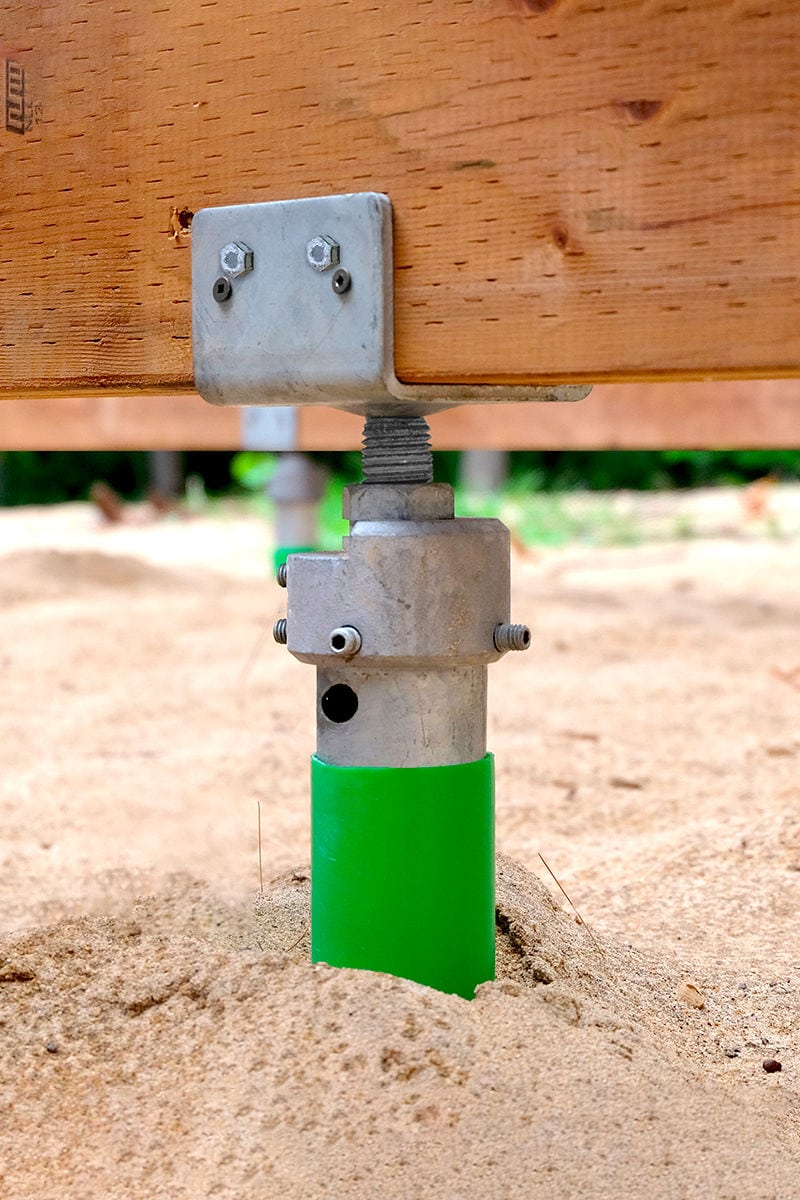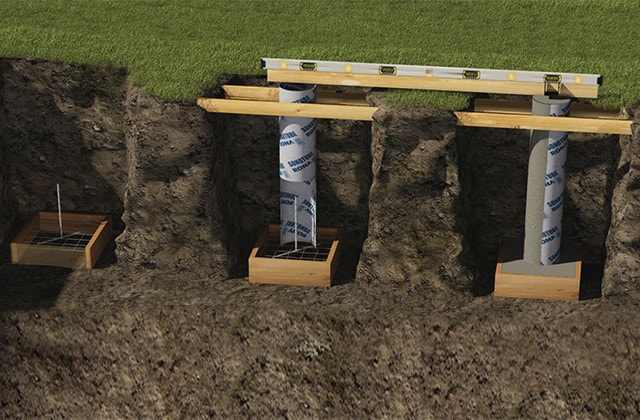Professional Tips for Setting Up Deck Footings to Support Your Outdoor Space
When it pertains to building a deck, one of the most critical components to take into consideration is the installation of appropriate footings. These footings are the foundation whereupon your outside room will rest, supplying security and assistance for many years to find. But what precisely does it require to set up deck footings appropriately? In this conversation, we will certainly discover professional pointers and methods that can assist ensure a successful and sturdy deck installment. From choosing the right sort of footings to staying clear of usual mistakes, we will certainly give you with the understanding and insights you need to confidently start your deck-building journey. So, allow's dive right in and discover the key to a strong and durable outdoor area.
Importance of Correct Deck Footings
Proper deck footings are essential for guaranteeing the stability and durability of your exterior room. Without strong and properly mounted grounds, your deck may become unstable, leading to safety hazards and pricey repair services.

In addition to stability, appropriate deck footings additionally add to the durability of your outdoor space (Deck Footings). Footings that are developed and constructed to withstand the components and soil conditions in your area will certainly assist avoid the deck from settling or moving with time. By making certain the footings are correctly sized and set up, you can minimize the danger of damage to the deck structure, expanding its life expectancy and decreasing the demand for costly repairs or substitutes

Selecting the Right Kind Of Grounds
When selecting the appropriate sort of footings for your deck, it is essential to consider factors such as soil conditions, local building regulations, and the overall design of your outside area. The sort of footing you choose will certainly play a critical role in making sure the security and durability of your deck.
One typical type of ground is the concrete ground. Concrete grounds are appropriate for a lot of dirt conditions and supply exceptional assistance for decks.
In some instances, you might need to use specialized footings, such as pile grounds or deep foundations, if you are developing a big or multi-level deck. These footings are designed to distribute the weight of the deck over a larger area, ensuring stability and protecting against sinking or working out.
Prior to picking a sort of footing, it is vital to consult local structure codes and laws to make sure compliance. In addition, consider the layout and meant use of your exterior area. Factors such as the size, shape, and load-bearing requirements of your deck will certainly affect the kind of footing that is most suitable.
Preparing the Ground for Footing Installment
To appropriately prepare the ground for footing installation, it is vital to examine the soil problems and take needed steps to guarantee security and longevity of the deck. The initial step is to dig deep into the location where the grounds will be mounted. The deepness of the excavation will depend upon the frost line in your area and the particular needs of the deck style. It is important to eliminate any plant life, rocks, or debris from the excavation to make certain a strong foundation.
As soon as the area has actually been dug deep into, the next step is to small the dirt. This can be done using a plate compactor or by utilizing a hand meddle. Compacting the dirt helps to get rid of any kind of voids or air pockets, which can lead to clearing up and instability in time.
After compacting the dirt, it is necessary to lay a layer of crushed rock or crushed stone at the end of the excavation. This will certainly provide water drainage and help to stop water from merging around the footings, which can cause disintegration and instability.
Step-by-Step Guide to Setting Up Deck Footings
After appropriately preparing the ground for footing installment, the following step is to start the procedure of mounting deck grounds. This detailed guide will certainly offer you with a clear understanding of how to set up deck footings for your outside space.
Figure out the area: Beginning by noting the placements of the deck footings utilizing stakes and string. Make sure that the places line up with the design and design of your deck.
Dig the holes: Utilize a message hole digger or an auger to dig the holes for the footings. The depth and size of the openings need to remain in accordance with local building ordinance and the specific requirements of your deck layout.
Degree the openings: Make use of a level to guarantee that the holes are dug to the appropriate depth and are level with each various other. (Deck Footings)
Include crushed rock: Area a layer of crushed rock at the end of each hole to improve drainage and avoid the wood from rotting.
Insert the grounds: Position the grounds right into the holes, seeing to it they are degree and plumb. Utilize a degree and a measuring tape to ensure accuracy.
Safeguard the footings: Put concrete right into the holes around the grounds, loading them to the top. Utilize a message degree to ensure the footings stay degree as the concrete collections.
Enable time for curing: Allow the concrete treatment according to the producer's guidelines before waging the deck building and construction.
Typical Blunders to Stay Clear Of Throughout Footing Installment
One essential aspect to take into consideration during the setup of deck footings is avoiding typical blunders that can endanger the stability and long life of your exterior space. While deck grounds might see this site appear like a straightforward and easy part of the building and construction procedure, ignoring particular aspects can lead to pricey repairs and potential safety threats down the line.

Additionally, overlooking to set up correct drainage steps can cause water to build up around the footings, leading to rot, degeneration, and the eventual weakening of the deck's foundation. In addition, making use of the wrong sort of footing product or stopping working to adequately secure the grounds can compromise their structural honesty.
To stay clear of these mistakes, it is necessary to speak with an expert or adhere to industry guidelines to make sure proper footing setup. By doing so, you can make certain the stability and durability of your outside room, providing a secure and enjoyable setting for several years to come.
Verdict
To conclude, installing proper deck footings is important for the stability and longevity of your outdoor area. By selecting the ideal kind of footings and properly preparing the ground, you can ensure a solid foundation for your deck. Following a detailed guide and avoiding usual blunders throughout footing installment will certainly further enhance the sturdiness and security of your deck.
Appropriate deck grounds are vital for making certain the security and durability of your outside area. The grounds serve as a connection between the ground and the deck, permitting the weight of the deck and its occupants to be dispersed evenly right into the dirt.One usual type of footing is the concrete ground. Put the footings: their explanation Put the footings into the openings, making sure they are level and plumb. Safeguard the footings: Put concrete right into the holes around the grounds, loading them to the top.